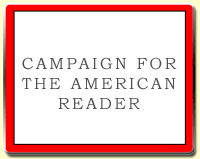 At B & N Reads Somers tagged five books that are arguably the first in their respective genres. The book that marks the start of the YA novel:
At B & N Reads Somers tagged five books that are arguably the first in their respective genres. The book that marks the start of the YA novel:Little Women, by Louisa May AlcottRead about the other entries on the list.
It seems strange today, but the concept of “childhood” as a separate and distinct period of life is pretty recent. Of course, the odds of surviving childhood have greatly improved only pretty recently, too, so it does make sense. While a lot of novels are floated as the first book intended for a young audience, Alcott’s Little Women (1868) is the earliest one to have all the features: A focus on youthful characters and their struggles, a story that presents an idyllic starting point that becomes complicated by adult concerns, and a realistic approach to the concerns of youth. It’s easy to see the seeds of the whole genre in this wonderful book.
Little Women also appears among Kate Kellaway's ten best Christmases in literature, Bea Davenport's top ten books about hair, nine notable unsung literary heroines, Sophie McKenzie's top ten mothers in children's books, John Dugdale's ten notable fictional works on winter sports, Melissa Albert's five favorite YA books that might make one cry, Anjelica Huston's seven favorite coming-of-age books, Bidisha's ten top books about women, Katherine Rundell's top ten descriptions of food in fiction, Gwyneth Rees's ten top books about siblings, Maya Angelou's 6 favorite books, Tim Lewis's ten best Christmas lunches in literature, and on the Observer's list of the ten best fictional mothers, Eleanor Birne's top ten list of books on motherhood, Erin Blakemore's list of five gutsy heroines to channel on an off day, Kate Saunders' critic's chart of mothers and daughters in literature, and Zoë Heller's list of five memorable portraits of sisters. It is a book that disappointed Geraldine Brooks on re-reading.
--Marshal Zeringue



